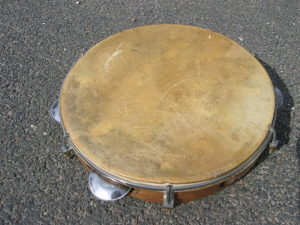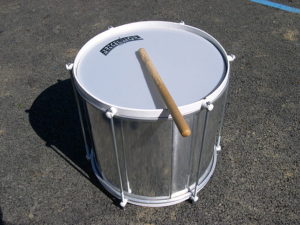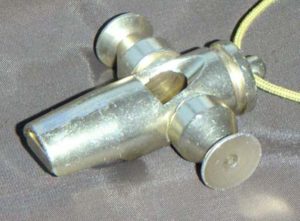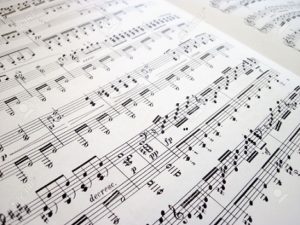
In the last article, we discussed some of the reasons that many traditional folkloric musical styles don’t translate seamlessly when applying Western notation. One example I gave was Brazilian samba, which has a very unique rhythmic sway that cannot be accurately notated in the traditional Western sense.
This article will look more closely at this rhythmic sway and explore some methods for learning this style of music as authentically as possible, without actually travelling to Brazil.
Of course, there is no true substitute for experiencing a style of music in the environment in which it originally developed. Despite its many forms and the style morphing into different sub-genres and fusions, samba, in its purest sense, is Carnaval music created to be experienced on the streets. While the best way to experience samba is by travelling to Brazil, living in the 21st century means that we have an insight, through recordings (both video and audio), books, and the Internet, into how samba sounds and feels.
In Brazil, samba is studied in Escolas de Samba, or samba schools. The percussion sections or baterias in these escolas can vary from 5 to 500 musicians in size and many of the most well known escolas can be heard in compilation CD’s, or seen in videos on YouTube. To learn the style, one must truly immerse oneself in these resources.
One final thing to consider before we get into the detail of this style is that the word “samba” covers a huge amount of music. Not all sub-genres of samba are the same and the style has been fused with rock, pop, hip hop, and other popular music genres to create unique new styles.
The topics covered in this article may not apply to all sub-styles of samba, you’ll only know for sure what is appropriate in any given situation by listening to as much music as possible.
Samba and Swing
I’ve already mentioned the unique swinging rhythmic momentum in samba, but haven’t gone into great detail about how it actually sounds.
This swing is not the same as in swing music in the USA. In fact, the word “swing” can be misleading as in Western music education we’re taught that swing is where straight 8th-notes become triplets with the middle 8th-note missing. The samba “swing” does not fit into this triplet subdivision, nor does it fit into a 16th note subdivision, it fits somewhere in the middle and can be applied in varying degrees depending on how authentic you want the music to feel.
I feel as though the best way to understand how this swing works, is by focusing on the sound created by a shaker.
Most samba styles are felt in 2, meaning that in each bar there are 2 strong beats. In Western terms, this means the time signature is either 2/4 or cut common time. These beats are outlined by the surdos (low pitched drums similar to a floor tom) while other instruments such as ganzas, chocalhos, tamborims, agogos, repiques, pandeiros, and caixas usually divide each beat (unevenly) in 4 while accenting in anticipation of each beat (in Western terms a 16th-note before each quarter note beat).
When we accent this rhythm with a shaker, we notice how the rhythmic flow of the rest of the pattern changes, especially when the tempo is increased.
This flow doesn’t just apply to instruments that shake (ganzas, chocalhos, etc.), but examining this shaker pattern gives us a clearer picture of how the samba swing should feel.
Samba Ensemble
The percussion section of a samba ensemble is called the “bateria.” Incidentally this word also means “drum kit” in Portuguese and Spanish. Before we go any further, I feel it necessary to detail the instruments of a samba bateria.

Surdos - large floor tom-like drums which provide the heartbeat of most styles of samba music.
There are 3 different sizes of surdo:
- The surdo marcação (marker) or primeira is the largest surdo at between 22-26” in diameter. This surdo plays beat 2 of the samba “1 2” feel.

- The surdo resposta (response) or segunda is smaller than the marcação at 20-22” in diameter and usually plays the first beat of the samba “1 2” feel.

- The surdo cutador (cutter) or terceira is the smallest of the surdos at 14-18 in diameter. This drum doesn’t always feature in a samba ensemble but when it does, it plays more complex embellishments of the basic “1 2” feel played by the other surdos.

Caixa - a samba snare drum. Unlike snare drums, caixa are almost exclusively made of metal and have a smooth plastic batter head.

Ganzá - a shaker that’s either woven or made from metal and filled with beads, pebbles, or something similar.


Chocalho - an instrument used to outline rhythms played by the caixa. A chocalho consists of a metal frame with a number of rows of tambourine like jingles. It’s played by shaking the frame forward and backwards.

Agogô - a pair of bells varying in pitch connected by a c-shaped metal rod. The bells can either be played with a stick, or struck together by pinching the connecting rod together. The word agogô comes from a Yoruba (west african) word meaning “bell.”


Tamborim - a small high pitched, single headed, hand held drum usually 6” in diameter. The tamborim is held with the weak hand and struck with a 3-pronged plastic rod with the strong hand. The best tamborim players use both the tamborim hand and the stick hand to play the instrument.


Pandeiro - a Brazilian tambourine with one drum head and dry sounding metal jingles around the frame of the drum. The pandeiro can produce a wide array of sounds, from deep bass tones and piercing slap tones to subtle jingle tones. Pandeiro virtuosi include Jorginho do Pandeiro and Wellington Moreira.

Repique/Repinique - a high pitched drum somewhere in between a surdo and a caixa in size. The repique player uses a combination of strokes on the drum head and on the rim of the drum to create a complex loose rhythm. The repinique often plays an improvisational role in samba music.

Apito - a small whistle used by the leader of the ensemble to signal a change in section.

Cuica - a single headed drum featuring an internal bamboo rod attached to the drum head. The cuica is played not by being struck on the drum skin, but by sliding a wet cloth up and down the bamboo rod to produce a human-like crying sound. The word “cuica” is onomatopoeia. The cuica often has an improvisational role in the samba ensemble.
 Reco-reco - an instrument similar to a guiro in Spanish-American music. The reco-reco is tubular metal scraper that similarly to the chocalho and ganza, accents the anticipation of each down beat.
Reco-reco - an instrument similar to a guiro in Spanish-American music. The reco-reco is tubular metal scraper that similarly to the chocalho and ganza, accents the anticipation of each down beat.

Musical Applications
If you’re playing samba in a small ensemble and you want to create this rhythmic flow, you’ll need to consider what percussion setup you want to use. Here are some common examples:
1 instrument
- Pandeiro - an extremely versatile tambourine like instrument played extensively throughout Brazil. Very useful if you want to reproduce the sounds of a larger samba ensemble due to the wide range of tones available (bass for surdos, slaps for tamborims/repiques, jingle for chocalhos).
- Ganza (shaker) - useful if you want to add a soft percussive sway to a small ensemble but don’t want to overpower.
- Cajon - originally a Peruvian instrument that’s becoming increasingly popular in other styles of music, from pop and rock to samba. Can reproduce both low and high pitched sounds and again is useful in a small ensemble to add a softer percussive touch.
2 Instruments
- Ganza and agogo bells - the shaker provides a blank percussive canvas for the agogo bells to embellish. Great for a small acoustic gig when no bass is required.
- Ganza and cajon - the shaker provides a rhythmic canvas for the cajon to embellish. The bass and slap tones of the cajon can outline the surdos and caixa parts of a larger ensemble.
- Cajon and agogo bells - The cajon provides the pulse with one hand while the agogo bells add a more authentic brazilian touch.
More instruments
Many percussionists choose to add foot percussion to create a bigger, denser percussive sound. Some examples of foot percussion include:
- Foot shakers - useful to create a hi-hat-like-backbeat, similar to a samba drum kit pattern.
- Wood blocks/cowbells - most percussion manufacturers now make a bracket to attach wood blocks and cowbells to a bass drum pedal, making it possible to play these instruments with either the left or right foot, while playing something else with the hands. While this coordination can take years to perfect, the results are worth the effort, especially when the band leader wants a big sound from just one percussionist.
Applying Samba
Due to its versatility, the drum kit has become a common instrument in most samba sub-genres. Most of the sounds present in a traditional samba percussion ensemble can be reproduced in some capacity by the drum kit, and auxiliary percussion can be added to fill in any other sounds.
Here is a brief list of how the different parts of the drum kit can be used to replicate the sounds present in a samba ensemble:
- Bass drum - Most samba drummers treat the bass drum like a surdo. They help hold the 2 feel present in most samba music by playing a steady pulse for the rest of the kit to play over.
- Hi-hat - The hi-hat is a very versatile part of the kit and while it can be played with the hands to reproduce a shaker-like ganza or chocalho sound, it can also be played with the foot to create a backbeat which works in cooperation with the bass drum to outline a surdo pattern.
- Snare drum - Like the hi-hats, the snare drum it very versatile. Samba drummers commonly play a cross-stick sound with the left hand to outline the rhythms played by the tamborim, or for more raucous sections of a song it can be played exactly the same way as a caixa (samba snare drum).
- Ride cymbal - Commonly used as an alternative to the hi-hats for bigger, more airy sections of a song.
- Tom toms - The low tom especially can be played like a surdo, especially when the tone is varied between dead strokes (leaving the tip of the stick pressed against the drumhead) and open strokes (letting the stick come back from the head). The higher pitched toms can be used as higher pitched surdos playing the first downbeat while the low tom plays the 2nd beat. They can also be played like the repique if they’re tuned to a high tension.
One incredibly important thing to remember is that while this rhythmic sway is prevalent in most styles of samba, you may choose to adopt it to varying degrees depending on the musical situation in which you’re playing. I like to think of this swing on a sort of imaginary scale where one side equals completely straight even notes and the other side equals fully fledged, uneven samba notes. You should be able to play anywhere on this scale depending on the music you’re playing.
Here is a list of some musical situations in which an authentic swinging samba might not be suitable:
- When playing samba pop or rock. Clube Do Bolanço are a good example of samba rock, and their drummer Edu Salmaso will vary his swing depending on the song being played, often playing completely even 8th or 16th notes.
- When playing with a rhythm section unfamiliar with how samba swings. If you start to “swing” and the other musicians don’t understand what you’re doing, the music can feel uneasy.
- Play to your venue. Some venues (particularly in the UK where I live) want to host “Latin” music, but all they really want is a slightly Latin sounding groove, maybe with some Latin instruments, just to fit the mood and ambience of the venue. Playing a fully fledged swinging samba might not fit this situation.
Recommended Listening
If you’re serious about learning this music you need to be listening to the music itself. Here is a short list of bands and artists that will give you a brief introduction to the style:
Famous Escolas de Samba
- Deixa Falar
- Estaçao Primeira de Mangueira
- Vila Isabel
- Arranco do Engenho Dentro
- Portela
- Quilombo
- Imperio Serrano
Early sambistas
- Sinhô
- Joao de Baiana - credited with introducing the pandeiro as a samba instrument.
- Donga - co-composed first samba, Pelo Telefone.
- Banda Odeon - samba group that performed and popularised the samba Pelo Telefone.
- Pixinguinha - arranger and composer. Leader of a group called Os Batutas.
- Ismael Silva - composer.
- Armando Marçal - composer.
- Ataulfo Alves - 1930s singer and composer.
Others
These bands and artists are famous in Brazil, but did not only play samba music. Their music is influenced by a wide array of Brazilian music, samba included.
- Ivan Lins - Brazilian jazz and pop pianist. Famously collaborated with Cuban Chucho Valdés and his band Irakere.
- Djavan - Pop singer-songwriter. Hits include “Flor de Lis” and “Eu Te Devoro.”
- Jorge Ben - Brazilian popular musician and multi-instrumentalist. Famous for composing “Mas Que Nada,” a song popularised by Sergio Mendes and Brasil 66.
- Elis Regina - Brazilian pop and jazz singer.
- Antonio Carlos “Tom” Jobim - Bossa nova pianist and composer. He was so prolific that his compositions have been arranged in styles outside bossa nova.
- Joao Gilberto - Like Tom Jobim, Gilberto was a bossa musician whose songs have taken on samba arrangements over the years.
- Paulo Moura - Brazilian clarinetist and saxophonist. Released a fantastic live album in 1996 featuring the music of Pixinguinha.
Current Drummers
Following is a list of current drummers who are a great example to follow when applying these rhythms to the drum kit.
- Edu Ribeiro
- Duduka da Fonseca
- Douglas Alonso
- Mark Walker
Books
Here is a list of books that I’ve found particularly valuable while studying samba music.
- The Essence of Brazilian Percussion & Drum Set - Ed Uribe. Covers both percussion and drum kit applications including audio files. It also includes some typical rhythm section charts for you to try with other musicians.
- Brazilian Rhythms for Drumset - Duduka Da Fonseca & Bob Winter. Similar to Ed Uribe’s book but more heavily weighted towards drum set rather than percussion.
- World Jazz Drumming - Mark Walker. A good reference book that covers a number of common samba jazz examples and includes play-along tracks and audio files.
Bonus: Check out this video to learn how to replicate the Surdo drum on the bass drum and the Caixa beat on the snare drum.
Ready to learn music?
Start learning with our 30-day free trial! Try our music courses!
About Liberty Park Music
LPM is an online music school. We teach a variety of instruments and styles, including classical and jazz guitar, piano, drums, and music theory. We offer high-quality music lessons designed by accredited teachers from around the world. Our growing database of over 350 lessons come with many features—self-assessments, live chats, quizzes etc. Learn music with LPM, anytime, anywhere!











What a great lesson to introduce the culture and music of Brazil for drums. I learned so much from this.
I’m so glad you found it useful Jason!
Thank you for the kind words!
Thanx for the article
Any books what use learn how these and other percussion is notated?
I’d recommend Ed Uribe’s “The Essence of Brazilian Percussion and Drum Set” or Duduka Da Fonseca and Bob Weiner’s “Brazilian Rhythms for Drumset” as a good starting point.
If you want a challenge try Ramon Montagner’s “Rhythmic Imigination”.
All the best
Brendan